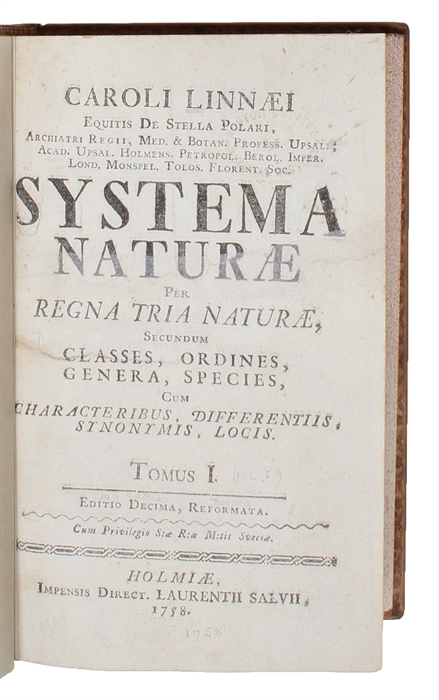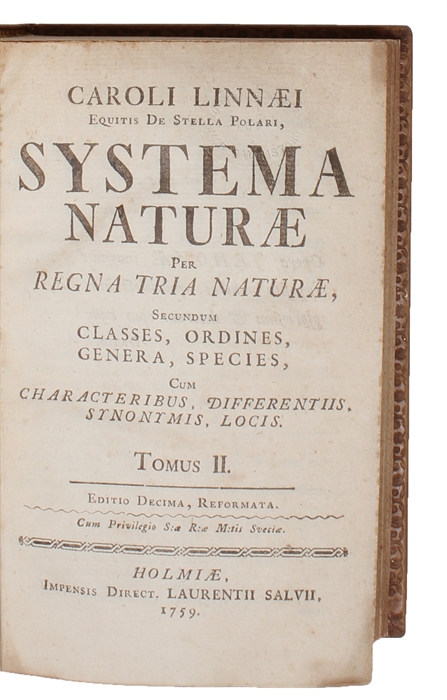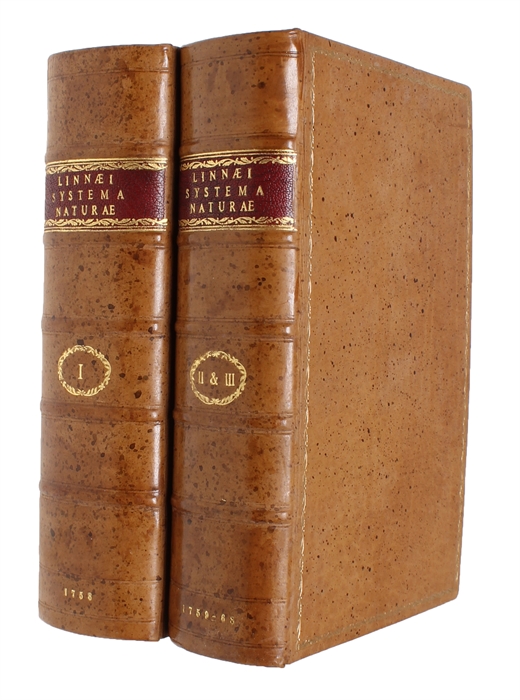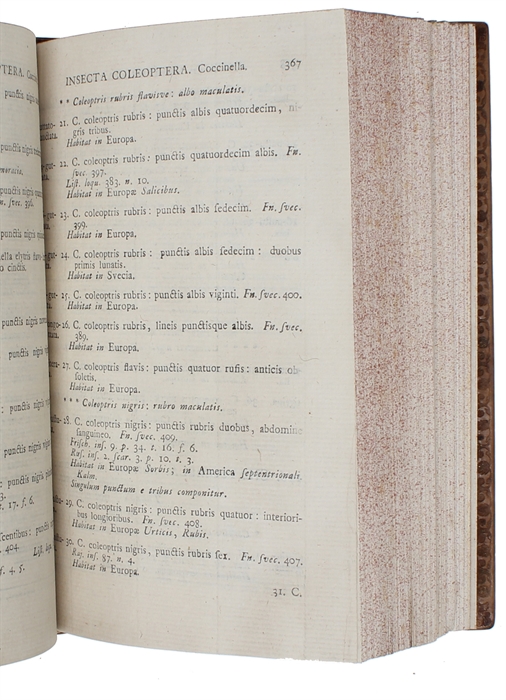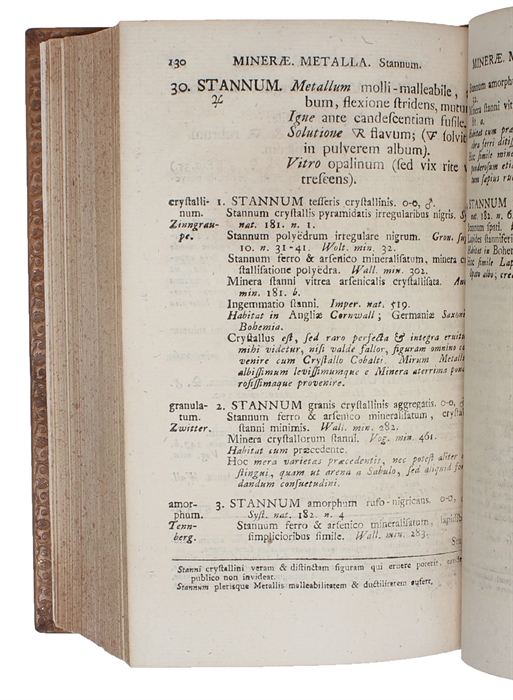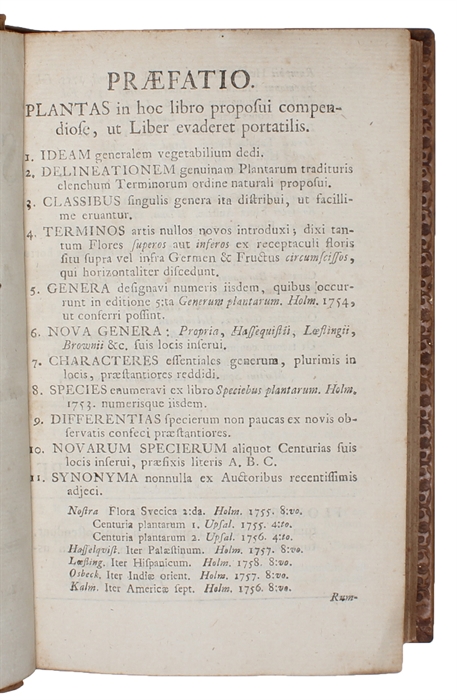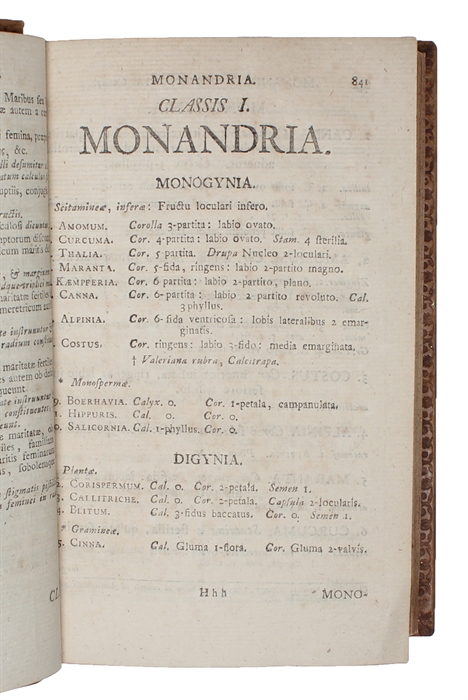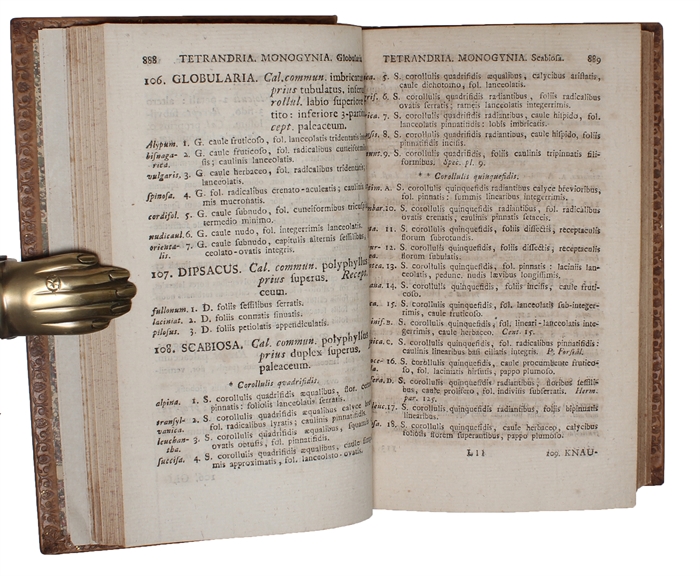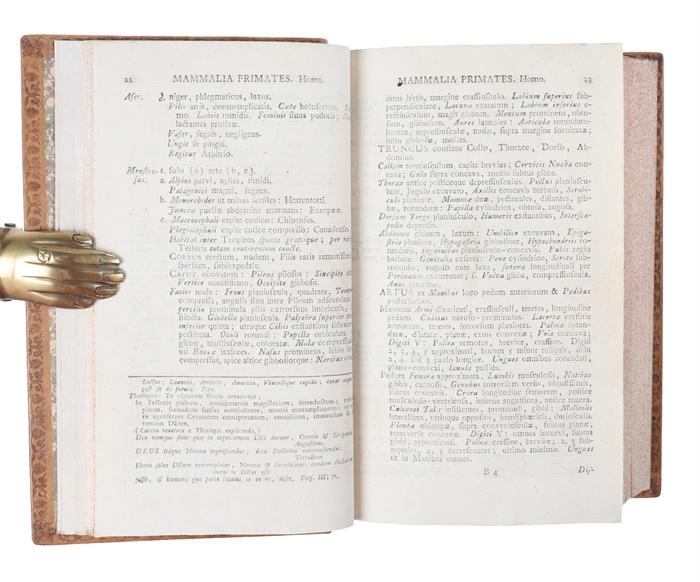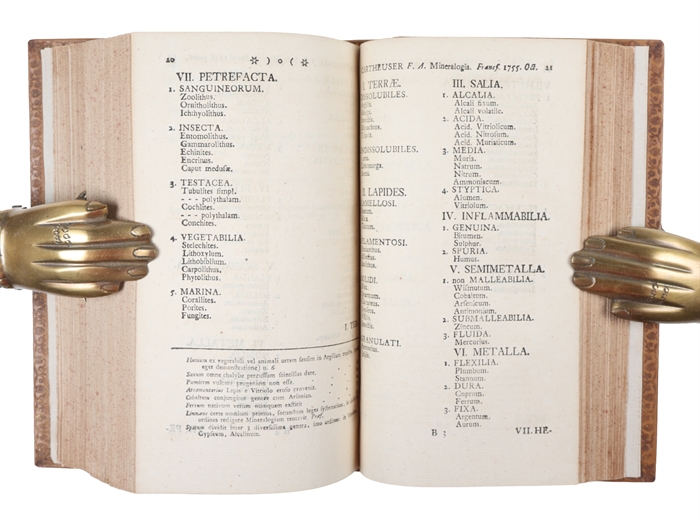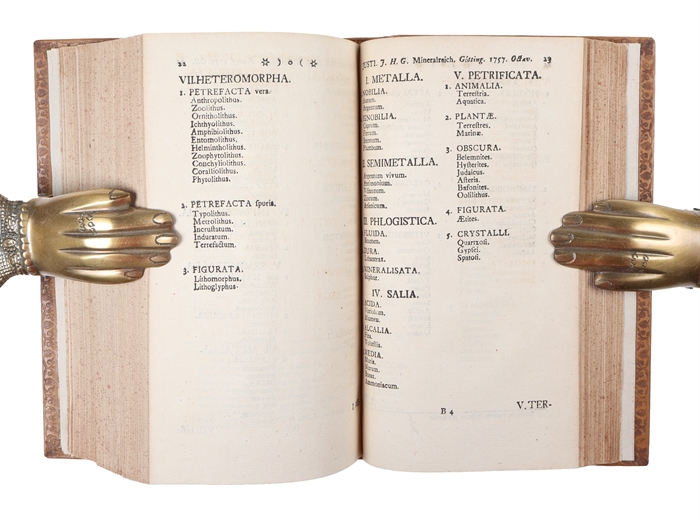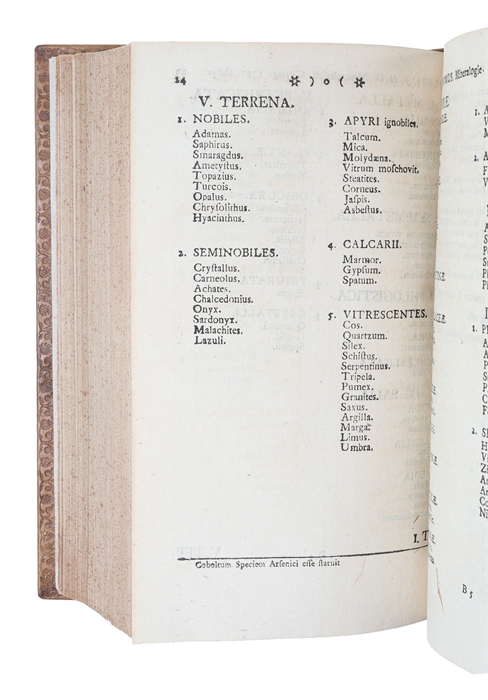THE BASIS OF ZOOLOGICAL NOMENCLATURE
LINNAEUS, CAROLUS (CARL LINNÉ).
Systema Naturae. Per Regna Tria Naturae, Secundum Classes, Ordines, Genera, Species, Cum Characteribus, Differentiis, Synonymis, Locis. Editio Decima, Reformata. 3 vols.
Holmiae, Laurentius Salvius, 1758-59 + 1768.
8vo. Beautifully bound in two recent full mottled calf bindings, in pastiche, with five raised bands, and gilt title-labels to spine. Gilt borders to boards and blindstamped ornamental borders to inside of boards. Title-page of volume 1 with two neatly repaired tears, no loss. Very discreet stamp in blind to title-page (Boston Society Natural History). A few leaves lightly brownspotted, otherwise exceptionally clean (vol. 1 presumably cleaned). All in all a lovely copy. (4), 823, (1, -errata, being p. (824)); (4) pp, pp. 825-1384 + 236, (20, -Index) pp. + 3 folded, engraved plates.
The rare seminal tenth edition of Linnaeus' main work (here bound together with the 3rd part, published 10 years later), being the most important edition of this foundational work, as "[i]t is in this edition that Linnaeus carried out the definitive plan of binominal nomenclature, with diagnosis and synonyms, for the fist time, including the generic and the trivial names, which together form the specific name of each animal. This edition has therefore been accepted as "the basis of zoological nomenclature". (Sandberg no. 12). "Systema Natura" is considered the bible of natural history, and with the definitive tenth edition of it, it founded modern zooloical nomenclature and changed the science more profoundly than any other work before or after.
"During his lifetime, Linnaeus exerted an influence in his field - botany and natural history - that had had few parallels in the history of science. Driven by indomitable ambition and aided by an incredible capacity for work, he accomplished the tremendous task that he had set for himself in his youth: the establishment of new systems for the three kingdoms of nature to facilitate the description of all known animals, plants, and minerals." (D.S.B. VIII:374).
"He compiled this work, consisting only of seven folio leaves, as a first outline of what in its further development became the foundation of botanical and zoological classification systems. Linné was first and foemost a systematist, subordinating all botanical problems to that of classification. He established the principles of class, order, genus and species for all plants and animals... The tenth edition of the Systema Naturae, 1758, is his final version of the system by which many plants and animals are still named to this day with references "Linnaeus", "Linn." or "L." attached." (Printing and the Mind of Man, p. 114).
"In this edition, the binomial system previously emplyed by Linnaeus in the work entitled "Museum Tessinianum" (1753) was extended in its application to all the kingdoms of nature; the Artedian classification of fishes, adopted in the earlier editions, was superseded by the familiar Linnaean system, and the cetaceans were for the first time eliminated from the class of fishes and grouped with the viviparous quadrupeds under the new class name Mammalia." (Soulsby).
"TENTH, AND DEFINITIVE, EDITION; a scarce and highly important printing, which standardized zoological taxonomy and nomenclature and utilized binomial nomenclature (generic coupled with a specific epithet) throughout. In this edition, Linnaeus became the first naturalist to recognize whales as mammals." (Freilich-sale, no. 358).
Sandberg 12; Norman 1:1359; Soulsby 58; Stafleu & Cowan TL2 4794; Hulth p.6.
Order-nr.: 49895

